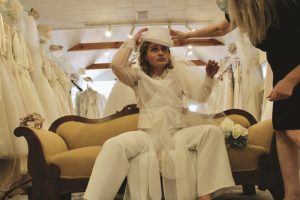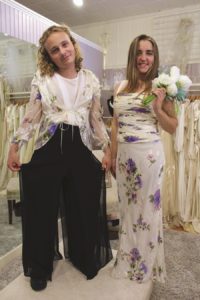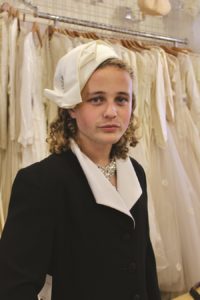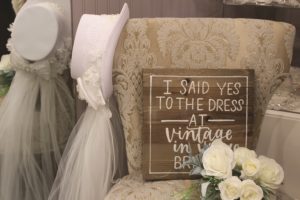May is peeking out from every corner — neon pink tulips, verdant leaf buds, and deep purple grape hyancinths. But what about me? I’ll admit I’ve been feeling a little outdone.
Maureen Leavenworth is one person who doesn’t seem be challenged by the call for a seasonal wardrobe update, even though nothing at her Provincetown Vintage in Vogue store is actually new. As I walk into the shop, I pass by a couple of incredibly well-dressed mannequins — one in a breezy two-piece skirt suit, another in a light pink tulle gown.
“What are your spring fashion dos and don’ts?” I ask Leavenworth.
“I don’t have don’ts,” she says. “I only have dos.”
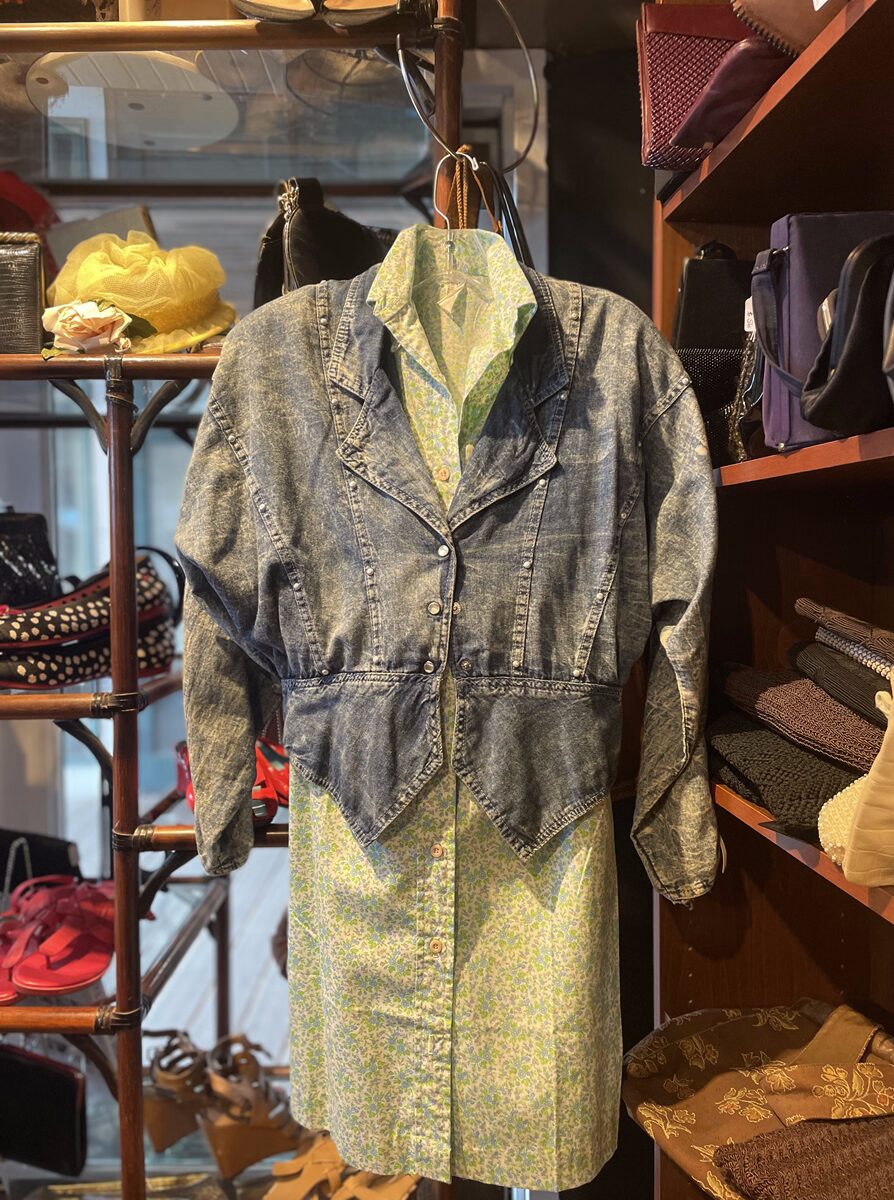
Leavenworth is not a trend-watcher. When putting together outfits, she goes “by gut and heart,” she says. “Only purchase what you really love,” is a do. That sounds good, I tell her, except that some of us are lost souls who aren’t so sure what it is we love. She guides me to a rack of dresses at the center of the shop. If there’s one thing that’s timeless for spring, she says, “it’s the iconic small print cotton dress.”
She pulls out a 1960s mod mini in a blue-and-green flower print to make her point. Also: a white one with blue flowers, a belted dress with floral stripes of pink, yellow, and green, and a dusky blue flowy one covered in stars. These dresses are all totally different from one another. But she explains what they have in common: all were made in the 1950s and early ’60s, she says, and they are “all stellar pieces.”
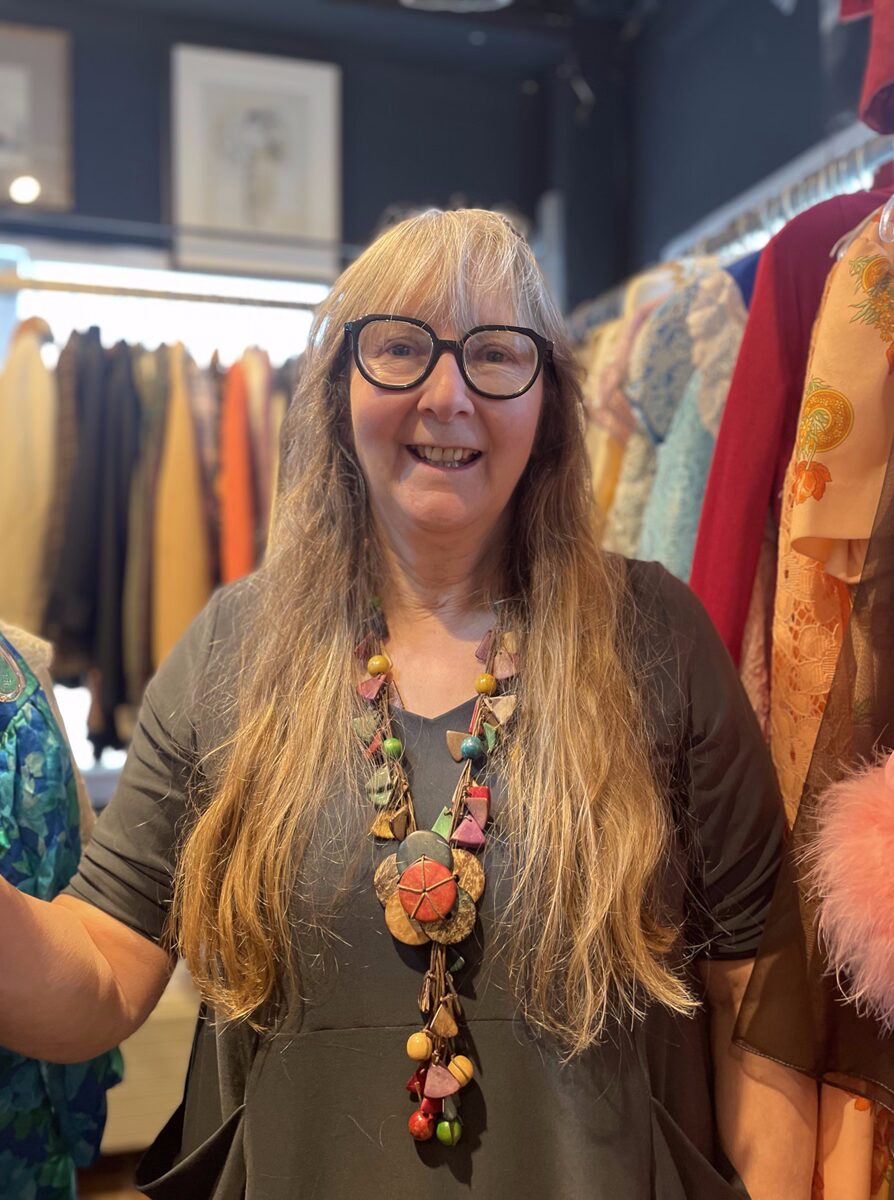
Leavenworth lifts one more dress from the rack, this one in a forest-green paisley pattern. She puts it back. It won’t do for the current quest. “A September look,” she says.
Returning to spring, she says, “When in doubt, florals. They’re cheerful.” Adding, after a pause, “I believe in bringing more cheer into this world any way that we can.”
But perhaps recognizing that the breeze coming off the water is only about 50 degrees, she says: “I love denim.” The material “has been around forever, it wears like iron, and the older it is, the better it looks.” I look down at my own outfit: I had entered the store in a Canadian tuxedo — denim on denim. “Wonderful,” Leavenworth answers, encouragingly, “absolutely,” before delivering her gentle critique: “Especially if it’s a dark denim and a light denim. Mix up the tones.”
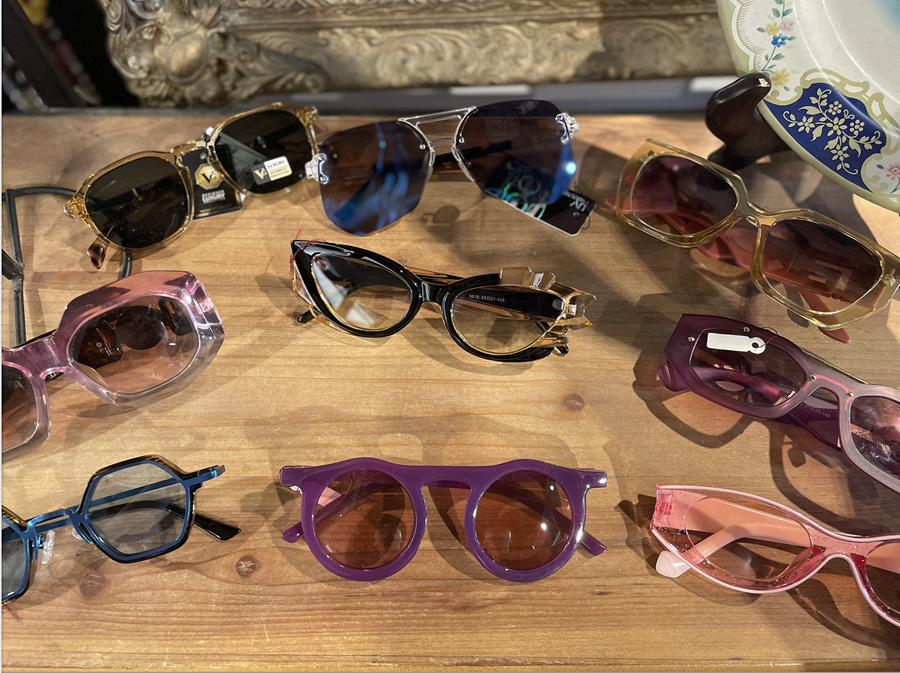
Her eye lands on a long-sleeved denim shirt-jacket. Its tag reads, “Made in USA,” which, Leavenworth notes, is an indication that it was likely made in the 1970s or ’80s. “If it has shoulder pads, then it’s probably from the ’80s.” The jacket has them; it tapers in at the waist and is adorned with pearl snaps. Leavenworth puts it over one of the 1950s cotton floral-patterned dresses. It works. “I love mixing decades,” she says.
Vintage in Vogue has clothing from the mid-1800s to the late 1900s. Though Leavenworth let’s slip that the 1970s might be closest to her heart, “the ’80s are starting to grow on me,” she says. She’s worn thrifted clothing “since forever.” Growing up in Blackstone, which has a history as a mill town, she went to the Salvation Army and St. Vincent de Paul thrift shops for her clothing. Both of her parents worked in the textile industry. “Caring about textiles is something that’s definitely ingrained in me,” she says.
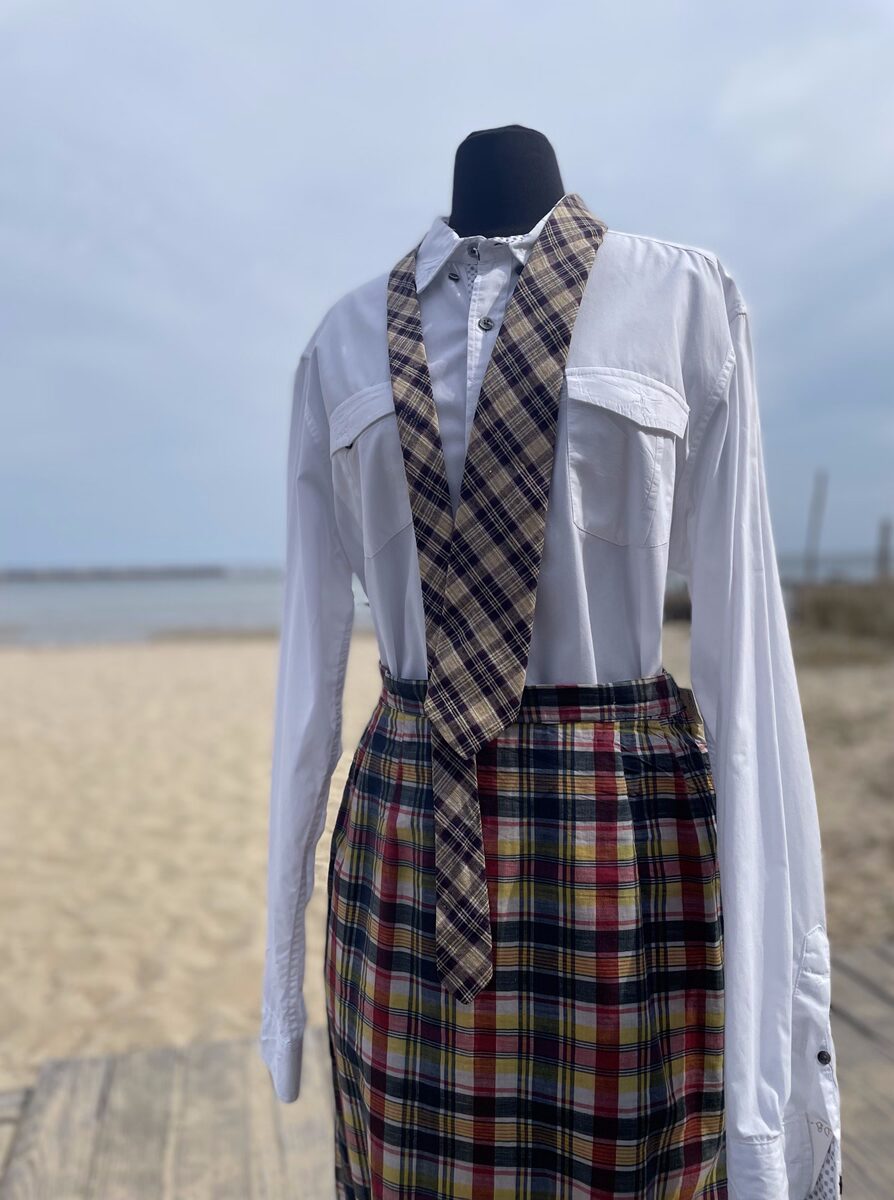
A red, black, and yellow plaid skirt catches Leavenworth’s attention. She grabs it and holds it up next to a rack of ties. “I got in trouble in elementary school for wearing a tie,” she says, slyly. “That little bit of yellow in the skirt is picking up the bit of gold here,” she says, picking out a plaid tie. “You can wear different checks. What’s stopping you?” Risky pattern-mixing could be one way to make an impression this season, we agree.
All around are accessories: hats hang on the walls, shelves covered with sunglasses, and jewelry in all shapes and sizes. Leavenworth stops at a bust covered in brooches: gold leaves, silver swirls, sparkling flowers. She is apparently fearless about them. Brooches can “add pizzazz” to any outfit, she says. You don’t have to wear them on a lapel, as convention suggests, though. She suggests putting them on hats or purses instead.
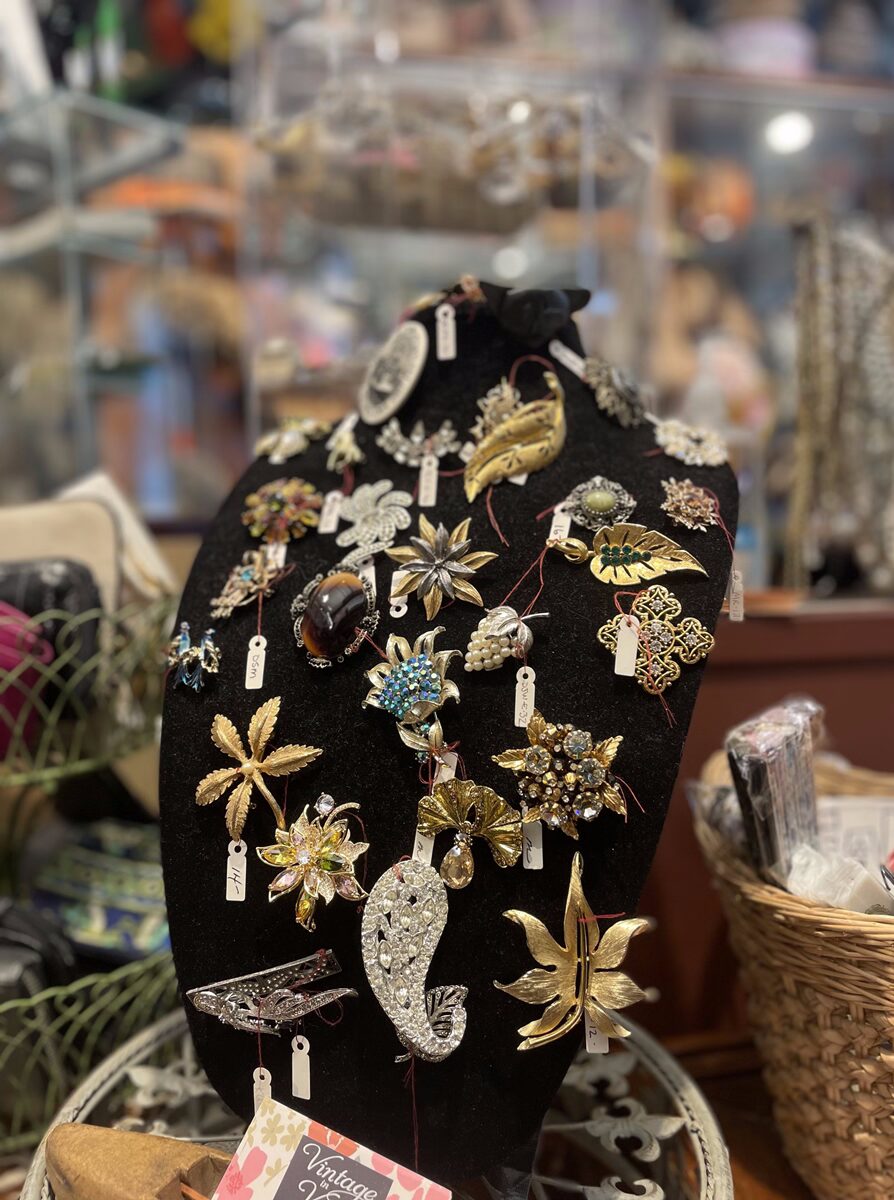
She’s equally fearless about glasses, “jewelry for the eyes,” and other “beautiful baubles.” She’s wearing what you might call a statement necklace — a colorful, almost sculptural number that gives her plain navy top a sense of purpose.
Fashion, an interlude with Leavenworth suggests, doesn’t require you to follow anyone but yourself. Try something on. “You’ve got to feel right in it,” she says.
